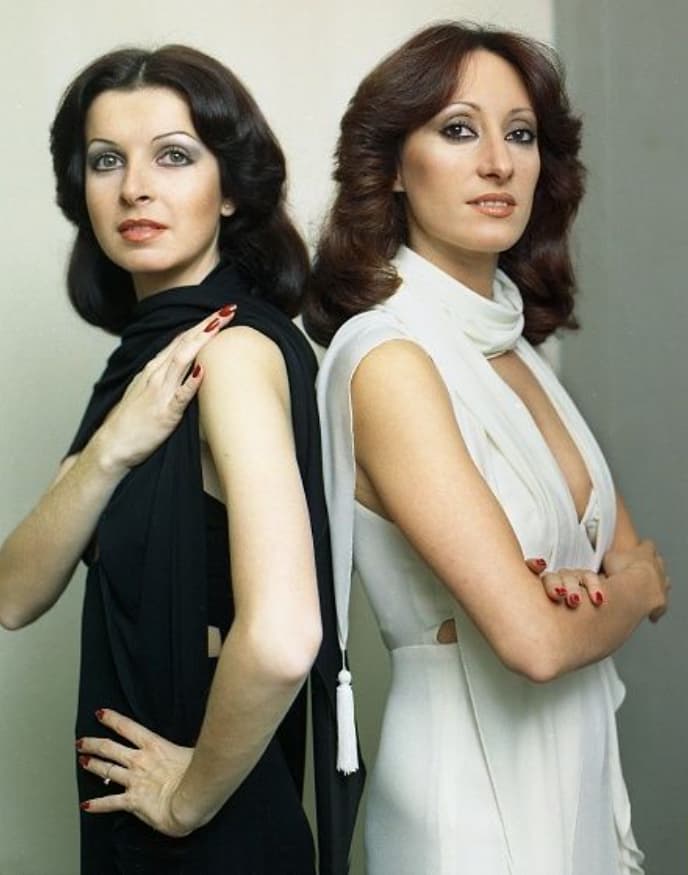
A Celebration of Feminine Poise and Disco Confidence
The 1977 hit “Sorry, I’m a Lady” by the Spanish duo Baccara is more than a lighthearted disco tune—it’s a declaration of self-possession, flirtation, and refined independence wrapped in a glittering dance beat.
Released on 7 August 1977, “Sorry, I’m a Lady” was the second single from Baccara’s debut album Baccara. When it hit the airwaves, it captured the hearts of listeners across Europe, climbing to the No. 1 spot in West Germany, Austria, Belgium, the Netherlands, and Norway. In the UK, it reached a respectable No. 8 on the Official Singles Chart. On year-end charts, it placed 4th in Austria and 3rd in Germany, underscoring its broad appeal.
Behind the Glitter: The Story of the Song
To truly appreciate “Sorry, I’m a Lady,” one must remember who Baccara were and what they represented at that moment. The duo Mayte Mateos and María Mendiola came from the Canary Islands in Spain, both former flamenco dancers. Their fusion of dance background with pop sensibility made them something fresh: glamorous, poised, and undeniably European disco.
The song was written by Rolf Soja and Frank Dostal, frequent collaborators who understood how to blend catchy hooks with a polished production. Produced by Soja, the track carries that signature disco sheen—infectious rhythm, shimmering melody, and a danceable tempo. In fact, its tempo is around 128 BPM in the key of G♯/A♭, giving it a buoyant, elegant energy.
Lyrically, the song is playful but also assertive. From lines like:
“Something in the way he moves / Makes me sorry I am a lady”
to its chorus:
“Sorry, I’m a lady … I would rather be … just a little shady,”
it weaves flirtation with self-awareness. The narrator is drawn to someone who is “dangerous” and charismatic, yet she remains firmly in control of her identity, her “ladyhood.” The tension of attraction and restraint is what gives the song emotional weight.
Significance and Legacy
In the late 1970s, disco was more than a musical style—it was a social space, a place for liberation, glamour, and self-expression. “Sorry, I’m a Lady” fit perfectly into that climate. The confident voice of a woman who knows her worth, carried by a lush, danceable arrangement, resonated deeply.
Moreover, Baccara’s image—two elegant, flamenco-trained women stepping into the spotlight—challenged some of the norms of pop performance at the time. Their style was graceful, sensual, but never compromising. That resonance went beyond just commercial success: the song became something of an anthem in various social scenes, celebrated for its unapologetic femininity.
The cultural impact extended to film, too: “Sorry, I’m a Lady” was featured in the soundtrack of the 1978 British movie The Stud, and later appeared in the 2010 Italian film Loose Cannons. Its staying power also invited covers — for example, a Spanish-language version “Yo Soy Una Dama” by Frecuencia Mod in 1978.
Emotional Resonance for Today
Listening to “Sorry, I’m a Lady” today is like reopening an old photograph album full of mirrored disco balls, evening dresses, and smoky club lights. For those who lived through that era—or for anyone drawn to its timeless elegance—the song brings a wave of nostalgia. It reminds us of a time when music was both glamorous and liberating, when one could dance and declare a sense of self without apology.
Its message remains subtly powerful: to embrace who you are, even in the face of temptation; to flirt, but to own your dignity; to be graceful, yet not afraid of a little shadow (“just a little shady,” as the lyrics say).
In the scheme of Baccara’s career, “Sorry, I’m a Lady” complemented their breakout hit “Yes Sir, I Can Boogie” with a maturity and poise that cemented their place in pop‑disco history. And though the disco era has long passed, this song lives on, not just on dancefloor compilations or in retro radio, but in the memory of listeners who remember—or imagine—a moment when music felt like shimmering possibility.